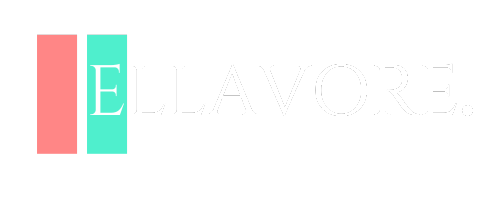Elegant Ways to Ask for What You Want
Have you ever hesitated before asking for a raise, a favour, or even the last slice of dessert at a dinner party? (Be honest….we’ve all eyed that chocolate cake while pretending we’re “just looking.”)
High-value individuals know that elegance isn’t just about what you ask for….it’s about how you ask. The difference between “Gimme that promotion” and “I’d love to discuss how I can contribute even more to the team” is the difference between a raised eyebrow and a raised glass in your honour.
So, how do you ask for what you want with grace, confidence, and yes style?
1. The Soft Ask
Ever noticed how the most influential people never demand? They invite.
(Bad) “I need this done by Friday.”
(Classy) “Would Friday work for you to wrap this up? I’d really appreciate it.”
The secret? Frame your request as a collaboration, not a command. High-value individuals understand that people are more likely to say yes when they feel valued, not cornered.
People naturally resist being told what to do, but they love feeling consulted. The Soft Ask shifts the dynamic from command to collaboration.
Instead of: “I need you to finish this report by 5 PM.” (Sounds like a drill sergeant.)
Try: “Would you be able to wrap this up by 5 PM? It would help me tremendously.” (Now you’re a team.)
The Key Ingredients of a Soft Ask
- Assume Willingness – Start with “Would you…?” or “Could we…?” instead of “You have to…”
- Offer Context – People comply faster when they understand the why.
- “I’m presenting to the board tomorrow, and having this finalized would make all the difference.”
- Leave Room for Autonomy – No one likes feeling trapped.
- “If that timeline doesn’t work, let me know what does—I’m happy to adjust.”
Real-Life Applications
- At Work: “I’d love your input on this proposal…your expertise always brings such clarity.” (Translation: “Please review this, but I’ve flattered you first.”)
- In Love: “I’ve been craving that little Italian place we tried last month. Would you be up for going this weekend?” (Smoother than “We’re going here. Book it.”)
- With Friends: “Any chance you could grab my dry cleaning while you’re out? I’d owe you one!” (Bonus points if you follow up with wine.)
The softer the ask, the harder it is to refuse. It’s not manipulation….it’s mutual respect packaged in elegance.
(Pro Tip: The best Soft Asks are delivered with a smile, eye contact, and zero guilt-tripping. If you master this, you’ll never hear “no” again, just “How soon do you need it?”)
2. The Compliment Sandwich
(Because Flattery Works When It’s Genuine)
No, we’re not talking about manipulative buttering-up. We’re talking about appreciation before the ask. High-value individuals know that the most elegant way to ask for something is to wrap it in sincere appreciation. Enter: The Compliment Sandwich. Not to be confused with empty flattery (which reeks of desperation), this technique is about acknowledging value before asking for one.
Example:
“I’ve always admired how you handle negotiations….you have such a strategic mind. I’d love your advice on how I can position myself for that leadership role.”
See what happened there? You made them feel like the expert (who doesn’t love that?), then slid in your request. Smooth.
(Bonus: If they say no, you still walk away having given a sincere compliment… classy.)
The Recipe for a Perfect Compliment Sandwich
Layer 1: The First Slice (Authentic Praise)
Start with something you genuinely admire about them.
- “I’ve always been impressed by how you handle client negotiations—you strike the perfect balance between firm and diplomatic.”
Layer 2: The Filling (Your Request)
Now, slide in the ask….smoothly.
- “I’d love your advice on how I can refine my approach for an upcoming pitch. Would you be open to a quick coffee chat this week?”
Layer 3: The Second Slice (Again the Praise)
End by circling back to their brilliance.
- “Honestly, just 15 minutes of your insight would be invaluable—you have a knack for this like no one else.”
And you know, keep the compliment real and genuine, otherwise it does no good.
Avoid if:
- The compliment is forced (“Your Excel skills are… um… legendary?”)
- The request is trivial (“Can you pass the salt? You have such graceful hands.”)
Real-Life Applications
- At Work: “Your presentations are always so polished…I learn something every time. Would you mind glancing over my slides before the client meeting? I’d love your eye for detail.”
- In Social Settings: “You throw the best dinner parties….the way you mix flavours is unreal. Any chance you’d share your recipe for that truffle risotto?”
- With a Partner: “You’re the best at planning surprises….remember that weekend in Tuscany? I’d be over the moon if you took the reins for our anniversary this year.”
3. The “We Both Win” Approach
High-value individuals know that the best requests aren’t one-sided. They’re an exchange. The most powerful requests are those where both parties walk away richer, whether in opportunity, connection, or simply goodwill. Think about it: When someone proposes a deal that benefits you just as much as them, don’t you feel almost eager to say yes? That’s the essence of the “We Both Win” Approach, a negotiation tactic so graceful, it feels less like asking and more like offering.
Instead of:
“Can you introduce me to your investor friend?”
Try:
“I’d love to connect with your investor friend….I think my project aligns perfectly with their interests, and it could be a great opportunity for them too.”
Now, you’re not just asking….you’re offering value. And that’s how you get doors opened with a smile instead of a sigh.
How to Structure a “Win-Win” Ask
1. Identify Their Gain (Before Yours)
What do they value? Time, recognition, business, pleasure?
How does fulfilling your request improve their world?
2. Present the Exchange Naturally
“I need an introduction to your investor friend.” (Sounds like a demand.)
“I’d love an intro to your investor friend….my startup aligns perfectly with their interest in sustainable tech, and I know they’re always looking for strong prospects.” (Classy)
3. Reinforce the Mutual Benefit
“It could be a great opportunity for both of us….and I’d be happy to return the favor with connections in my network.”
Real-Life Applications
In Business:
“I’d love to collaborate on this project. My team can bring the creative strategy, and your expertise in execution would make it unforgettable….a win for both our brands.”
In Networking:
“Let’s grab coffee….I’d love to hear about your expansion plans. I’ve worked with several clients in Asia and might have insights (or contacts) that could help.”
In Personal Favours:
“I’d adore borrowing your villa for the weekend… and of course, I’d have it professionally cleaned afterwards and leave a case of your favourite wine as a thank-you.”
True elegance lies in creating value, not extracting it. When you approach requests with a “How can this benefit us both?” mentality, you’re no longer just asking, you’re building alliances.
When to Use It (And When to Rethink)
✅ Perfect for:
- Professional collaborations
- Networking outreach
- High-stakes asks where reciprocity matters
❌ Avoid if:
- The “benefit” is flimsy (“If you lend me $500, I’ll… think fondly of you?”)
- You can’t actually deliver on your side of the deal
And remember: The most powerful people in the world don’t keep score. They create so much value that favours flow naturally.
Always follow through on your promises. Nothing unravels elegance faster than a hollow offer.
4. The Playful Nudge
(Because Humour Disarms Resistance)
A joke can make even the boldest request feel effortless. A well-timed, witty remark can turn an awkward request into a shared moment of amusement, making the other person want to say yes.
Why It Works
- Laughter lowers defenses. When someone chuckles, their guard drops, and they become more open to your request.
- Humour builds rapport. A shared joke creates a momentary bond, making the other person more inclined to help.
- It softens the ask. Playfulness removes the pressure, so the request feels lighter and less demanding.
The Key Ingredients of a Playful Nudge
Keep It Light, Not Passive-Aggressive
- (Bad) “Wow, must be nice to have all the time in the world to reply to emails…” (Sarcasm = bad.)
- (Classy) “I’m starting to think my emails are getting lost in your VIP spam folder—should I send a carrier pigeon instead?”
Make It Personal (But Not Pushy)
- “I know you’re busy ruling the corporate world, but any chance you could glance at my proposal before Friday?”
Know Your Audience
- A dry, witty nudge works for a British CEO.
- A pop-culture reference might land better with a Gen Z colleague.
.
Real-Life Examples
For a Delayed Response:
“I’d follow up again, but I don’t want to be that person. (Okay, fine—I’ll be that person. Any updates?)”
For a Forgotten Favour:
Want your friend to finally pay back that $50?
“So, about that $50 I lent you… Should I start charging interest, or are we still in the friendship grace period?”
Lighthearted? Yes. Effective? Absolutely.
For a Last-Minute Ask:
“I realize this is like asking for a parachute mid-freefall, but any chance you could…?”
When to Use It (And When to Hold Back)
✅ Perfect for:
- Casual requests among friends or colleagues
- Follow-ups when you don’t want to sound nagging
- Situations where a little levity is welcome
❌ Avoid if:
- The topic is highly sensitive (e.g., layoffs, serious apologies)
- The other person doesn’t share your sense of humour
The Fine Line Between Wit and Cringe
Good: “I’d ask for a favour, but I don’t want to abuse our friendship… unless?”
Bad: “Guess who’s about to beg for a favour? (It’s me.)” (Too desperate.)
5. The Strategic Silence
(Because Sometimes, Less is More)
After making your request, pause. Let the other person respond without filling the silence with nervous chatter.
Elegant people don’t ramble. They speak, then wait. It’s amazing how often the other person will say yes just to avoid the awkwardness….while you remain effortlessly composed.
This is Strategic Silence, and when mastered, it’s one of the most elegant (and underrated) ways to get what you want.
Why It Works
Silence creates urgency. When you stop speaking, the brain instinctively rushes to fill the void, often with agreement.
It projects confidence. Only those who are truly self-assured can comfortably hold a pause without fidgeting or backtracking.
It shifts the burden of response. Instead of you pushing for an answer, they feel compelled to break the silence, usually in your favour.
How to Deploy Strategic Silence Like a Pro
1. Make Your Ask Clearly (Then Stop)
State your request in a concise, confident tone.
Example: “I’d love your support on this project, your expertise would make all the difference.”
Then… say nothing.
2. Maintain Comfortable Eye Contact
No nervous smiling, no fidgeting. Just calm, expectant silence.
If seated, lean back slightly to signal you’re in no rush.
3. Let Them Break the Silence
Most people will respond within 3-5 seconds, often with a “Yes,” or at least a negotiation.
If they hesitate, you can lightly reinforce: “I’d really value your input on this.” Then… pause again.
When to Use It
✅ Ideal for:
- Salary negotiations (“I was thinking $X would reflect the market rate and my contributions.”)
- High-stakes requests (“This partnership could be transformative for both of us.”)
- Any situation where confidence matters more than words
❌ Avoid when:
- The other person is truly unable to answer (e.g., they need to consult someone else)
- You’re in a noisy/distracting environment
Why It’s the Ultimate Power Move
Most people fear silence and rush to fill it with concessions, compromises, or approvals. By mastering the pause, you:
- Avoid underselling yourself (no rambling justifications)
- Gain psychological leverage (the listener often says more than they intended)
- Project quiet authority (the hallmark of true elegance)
A Real-Life Example
Scene: A negotiation with a client who’s resisting your rate.
You: “Given the scope, my fee would be $10,000.”
Them: “That’s higher than we budgeted…”
You: [Silence, maintaining eye contact]
Them: “…But I suppose we could prioritize some features to make it work.”
Boom. You didn’t argue—you let them solve the problem.
6. 10 Elegant Phrases to Ask for What You Want
When in doubt, swap bluntness for softness—without losing clarity.
Here are refined phrases that signal both confidence and consideration:
1. “Would it be possible to…?”
Soft, respectful, and still direct.
→ “Would it be possible to reschedule our meeting to tomorrow?”
2. “I’d really appreciate it if…”
A great phrase to show gratitude before the request.
→ “I’d really appreciate it if you could review this before Friday.”
3. “May I suggest…?”
Invites collaboration instead of imposing.
→ “May I suggest we take a short break and revisit this with fresh minds?”
4. “When you have a moment, could you…?”
Conveys urgency with patience.
→ “When you have a moment, could you send over the files?”
5. “I wanted to check if you’d be open to…”
Respectful of the other person’s autonomy.
→ “I wanted to check if you’d be open to having dinner this weekend?”
6. “Would now be a good time to talk about…?”
Shows emotional intelligence and timing awareness.
→ “Would now be a good time to talk about the budget concerns?”
7. “I’d love your input on…”
Makes the other person feel valued, not burdened.
→ “I’d love your input on this design before I finalize it.”
8. “Could I ask a small favour?”
Disarms tension with modesty.
→ “Could I ask a small favour? Would you mind watching my bag for a minute?”
9. “If it’s not too much trouble…”
Use cautiously—can sound apologetic if overused, but warm in moderation.
→ “If it’s not too much trouble, could you send the invoice today?”
10. “Here’s what I’d love to see happen…”
Assertive but elegant—great for leadership or partnerships.
→ “Here’s what I’d love to see happen with this launch…”
7. What Classy People Don’t Do When Asking
Even a beautiful sentence can lose its grace if the intent behind it is poor.
Classy people never:
- Guilt-trip (“After all I’ve done, you should…”)
- Over-explain (“I’m so sorry but I just really need…”)
- Beg (“Please, please just this one time!”)
- Dominate (“You need to do this for me.”)
Their strength lies in respectful clarity. They ask, but don’t manipulate. They’re soft, but never spineless.
8. How to Follow Up Gracefully
If you don’t receive a response, follow up with gentle persistence, not pressure.
Elegant follow-up phrases:
- “Just circling back on this when you have a chance.”
- “Wanted to kindly follow up on my request…no rush, just wanted to check in.”
- “Let me know if you’ve had a chance to think about it!”
A true gentleman or lady respects time, both their own and others’.
9. How to Handle ‘No’ With Class
Being denied isn’t failure, it’s part of the dance.
When someone can’t meet your request:
- Smile and say, “I completely understand. Thank you for considering it.”
- Keep the door open: “Perhaps another time.”
The classy person remains unshaken, knowing that rejection doesn’t define their worth.
Elegance doesn’t chase. It invites.
Final Thought: Elegance is the Ultimate Power Play
Asking for what you want isn’t pushy….it’s polished. The key? Make the other person want to say yes.
So next time you’re tempted to tiptoe around a request, remember: High-value individuals don’t beg. They present opportunities.
Now, go forth and ask with confidence, preferably while holding a glass of champagne. 🥂
So the next time you want something….whether it’s an opportunity, support, love, or space…remember:
You don’t need to shrink. You don’t need to shout.
You just need to speak… with elegance.
(P.S. If you enjoyed this, imagine what else you could achieve with a little more elegance. Want me to write more? Drop a comment…or better yet, share this with someone who needs it.)







No Comments